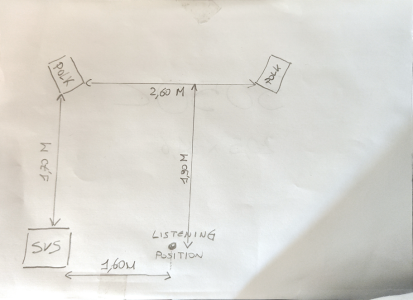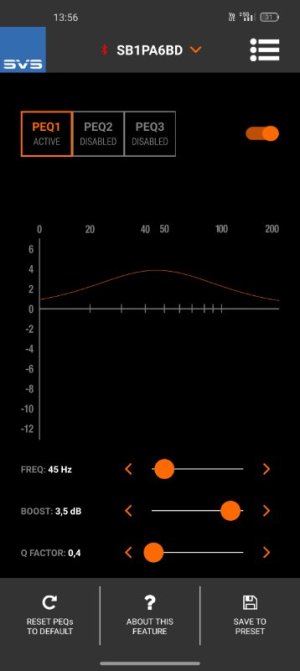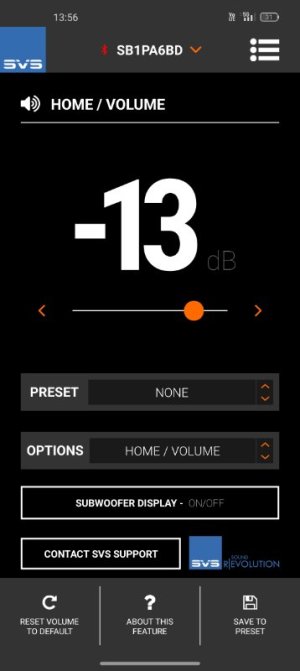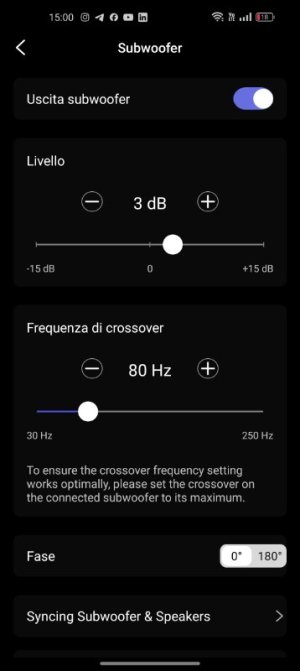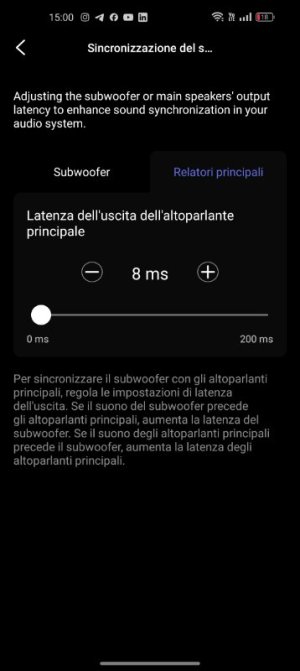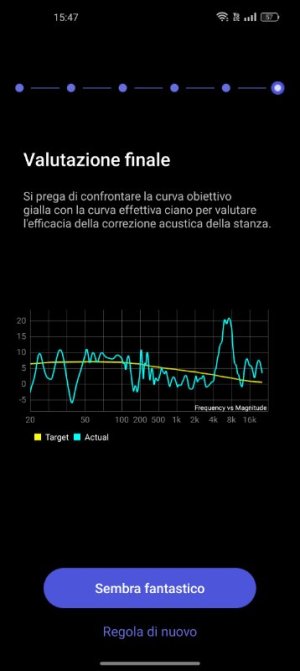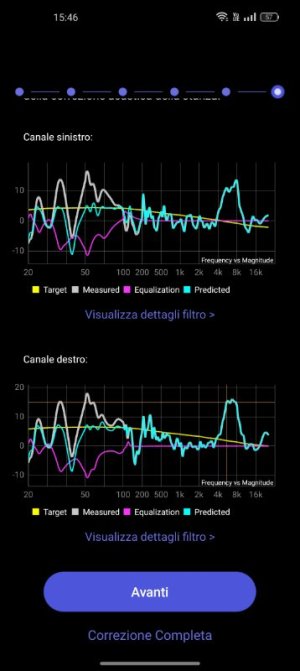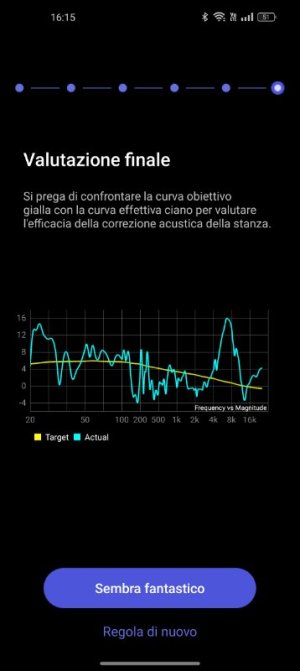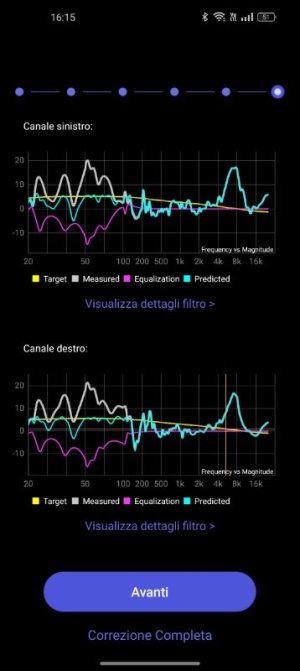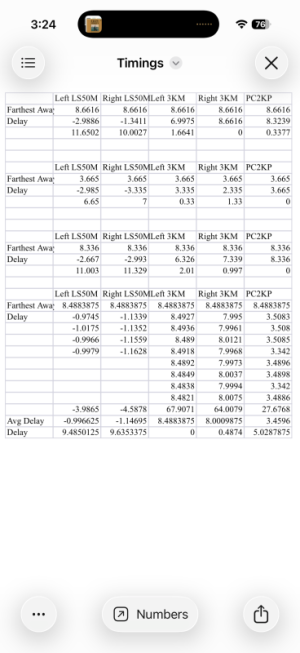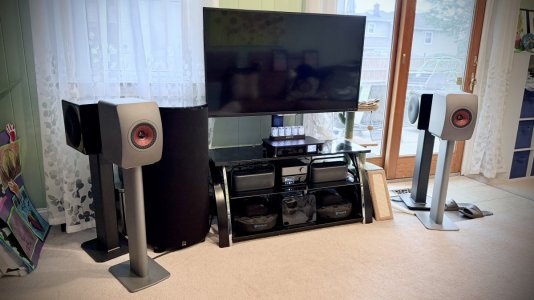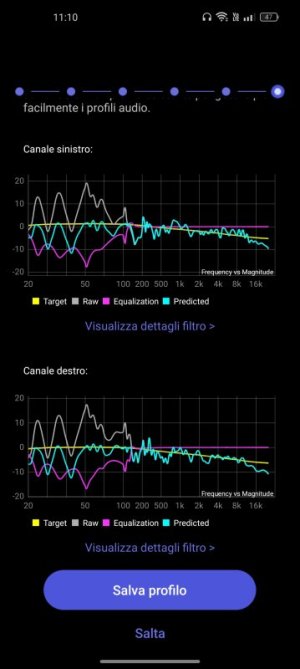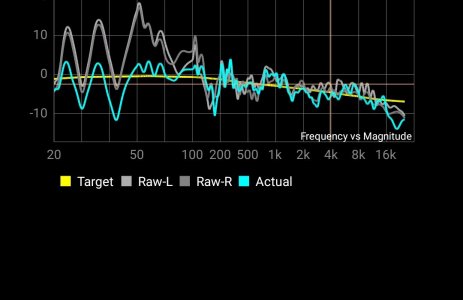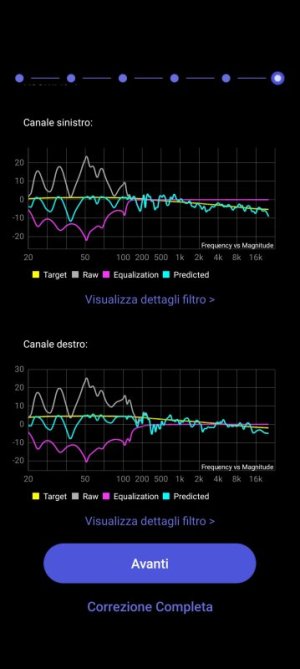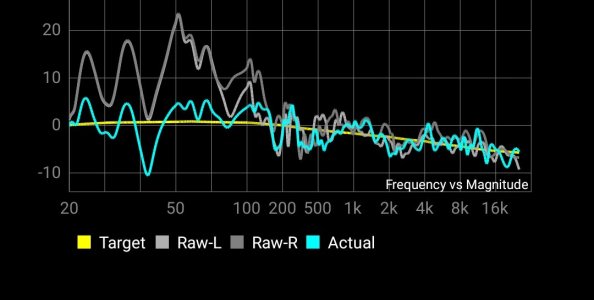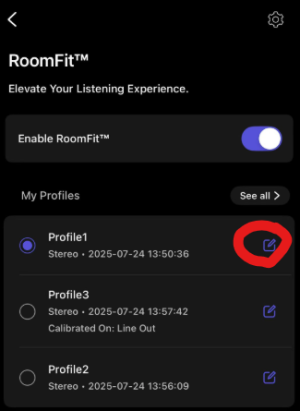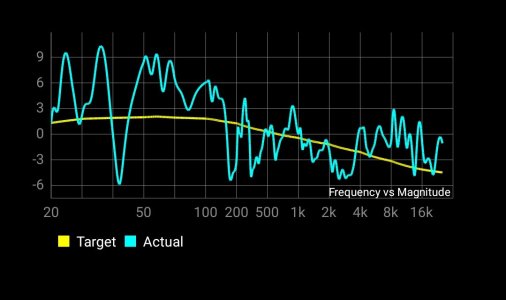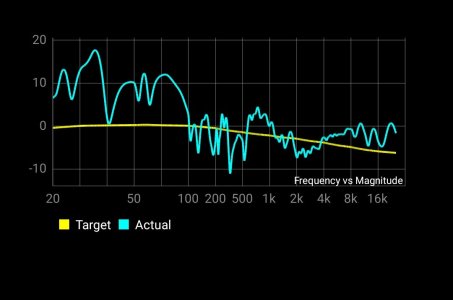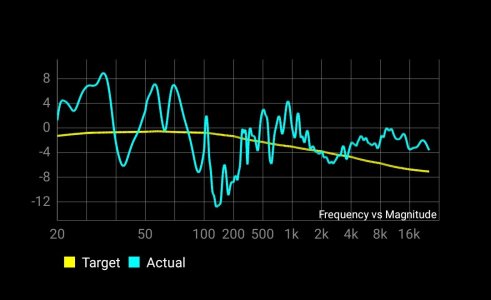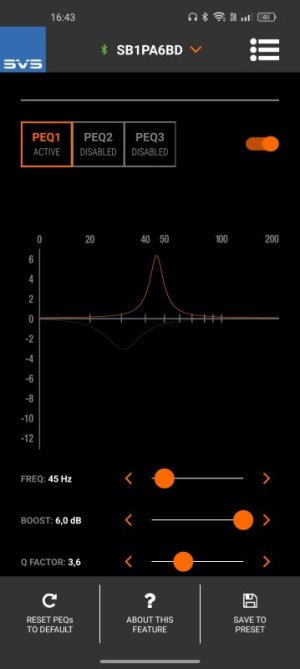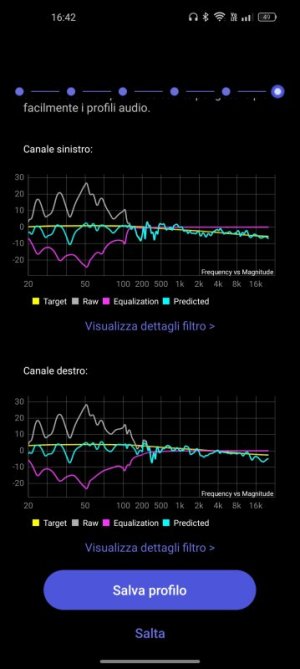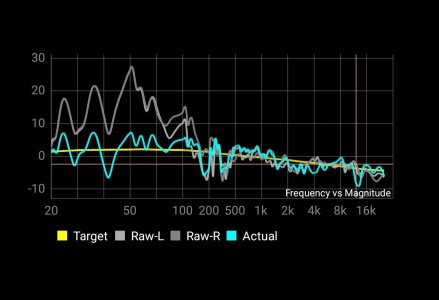dominikz
Major Contributor
- Joined
- Dec 31, 2024
- Messages
- 714
That looks significantly better than before!Ok, I redid the subwoofer layout according to your advice. Now it is in the corner of the other wall between the sofa and the wall.
I slightly widened the distance between the speakers (now it is 2.60 meters)
I moved the speakers forward another 10 cm.
Below is the new layout and the graphs.
Some questions before I make any more suggestions:
- What values for speaker/sub latency/delay have you configured at the moment in the WiiM app?
- What is the current distance from the SVS sub to your listening position, compared to each Polk speaker to your listening position?
- How did you set subwoofer volume (on the sub itself and in the WiiM app)?
- Do you at the moment have any PEQs configured in the SVS app?
Don't worry about the high frequency peak at 8000Hz - the peak is "added" by your phone microphone and doesn't really exist.The bass part seems better than before but the high part has the usual peak and I don't know how to reduce it
The only good way to 'reduce' this peak in the graphs is to use a better microphone when doing RC (ideally you'd use a calibrated measurement microphone).
Last edited:

